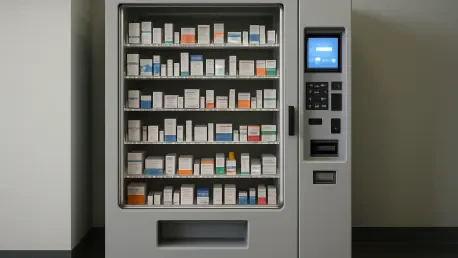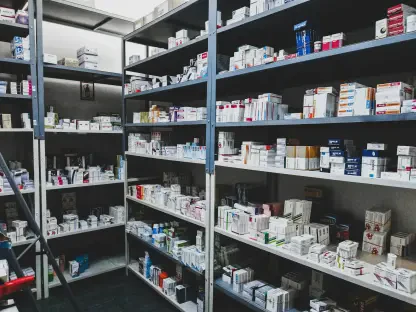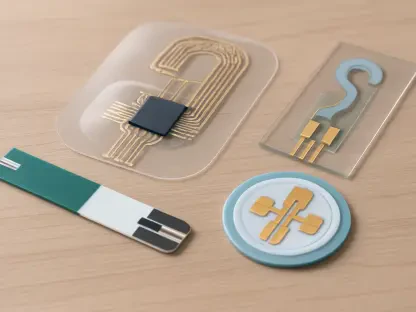In the heart of Chicago’s South Side, a troubling reality has unfolded as local pharmacy closures have turned neighborhoods into “pharmacy deserts,” leaving countless residents without easy access to life-sustaining medications, leading to missed prescriptions and worsening health. This crisis has caused deteriorating health conditions and a surge in hospital readmissions, particularly in underserved areas like Pullman, where two major pharmacy locations recently shuttered. Advocate Health Care has introduced a pioneering solution to this pressing issue by deploying prescription vending machines at key healthcare facilities. These innovative devices dispense medications directly to patients immediately after medical appointments or hospital discharges, aiming to dismantle barriers such as distance and time. While this technology offers a promising fix, it also ignites a broader conversation about the intersection of automation and personalized healthcare in communities desperate for solutions.
Addressing Accessibility Challenges
Bridging the Gap in Underserved Areas
Advocate Health Care’s strategic placement of prescription vending machines directly tackles the inaccessibility plaguing many communities due to pharmacy closures. Positioned at healthcare hubs like Imani Village clinic and Advocate Trinity Hospital, these machines ensure that patients can secure their medications without the burden of traveling to far-off pharmacies. The system operates with impressive efficiency: physicians transmit prescriptions to a dedicated pharmacy team, who then confirm insurance details and load the appropriate drugs into the machine. Patients receive a prompt notification via call or text, guiding them to retrieve their medications through a straightforward, user-friendly interface. This immediate access is transformative for individuals in pharmacy deserts, where the absence of local options often means untreated conditions and worsening health outcomes. By embedding this solution within familiar medical settings, the initiative reduces a significant hurdle for vulnerable populations.
Reducing Risks of Untreated Conditions
The impact of these vending machines extends beyond mere convenience, actively mitigating the risks associated with delayed or unfilled prescriptions. In areas where transportation is a persistent challenge, many patients struggle to reach distant pharmacies, often resulting in skipped medications and subsequent health complications. With these machines, the barrier of distance is virtually eliminated, as patients can collect their prescriptions right at the point of care. This is particularly crucial for those managing chronic illnesses like diabetes or hypertension, where consistent medication adherence is vital for stability. Moreover, the initiative helps prevent hospital readmissions by ensuring that discharged patients leave with their necessary drugs in hand, rather than risking a return home empty-handed. This direct intervention addresses a critical public health concern, offering a lifeline to communities disproportionately affected by systemic healthcare gaps.
Enhancing Convenience and Savings
Streamlining Medication Access for Patients
One of the standout advantages of prescription vending machines lies in their ability to streamline the process of obtaining medications, saving patients both time and effort. Dr. Julie Taylor, a family medicine physician with Advocate, emphasizes that this technology spares individuals the often grueling wait times encountered at traditional pharmacies, where high demand or stock shortages can cause significant delays. The machines are equipped with a diverse inventory, covering treatments for acute conditions like infections as well as chronic ailments such as asthma and heart disease. Patients can access their prescriptions almost instantly after a doctor’s visit, guided by intuitive features like large screens for identity verification. This efficiency is a major relief for those who might otherwise spend hours navigating overcrowded pharmacy lines or coordinating transportation, allowing them to focus on recovery rather than logistics.
Cutting Costs and Easing Burdens
Beyond the time savings, these vending machines deliver substantial financial benefits by reducing the indirect costs tied to securing medications. Many patients in underserved areas rely on paid rides or public transit to reach pharmacies, expenses that quickly add up and deter timely prescription pickups. With machines located directly at healthcare facilities, such transportation costs are effectively eliminated, providing much-needed relief to those on tight budgets. Additionally, the integration of features like video call options with pharmacists ensures that patients can still seek guidance without incurring extra travel expenses. A notable case involved a patient with an infection who avoided the typical hurdles of long waits and travel by using the machine, highlighting the tangible impact on both wallet and well-being. This cost-effective approach underscores the potential of technology to alleviate some of the economic pressures faced by vulnerable populations in accessing essential care.
Balancing Innovation with Personal Care
Weighing the Benefits Against Human Connection
While the advantages of prescription vending machines are evident, a significant concern arises around the potential erosion of personal interaction in healthcare. Garth Reynolds, executive director of the Illinois Pharmacists Association, acknowledges the machines’ role as a critical stopgap in areas devoid of pharmacy access, yet he cautions against over-reliance on automation. The human connection between pharmacists and patients often fosters trust and provides tailored advice, elements that are harder to replicate through a screen. Although the machines include video call capabilities for pharmacist consultations, Reynolds argues that these interactions may fall short of the depth and reassurance offered by in-person exchanges. This perspective highlights a fundamental tension in modern healthcare: the push for efficiency through technology must be carefully balanced against the irreplaceable value of human empathy and understanding.
Navigating the Future of Tech in Healthcare
The debate over vending machines in healthcare reflects a broader uncertainty about the long-term implications of replacing traditional roles with technological solutions. While these devices address immediate needs, their scalability and ability to fully substitute for the nuanced guidance of pharmacists remain under question. The concern is not just about losing personal touch but also about ensuring that patients, especially those with complex needs, receive comprehensive support that automated systems might not fully provide. As technology continues to infiltrate healthcare, finding ways to integrate digital tools while preserving meaningful provider-patient relationships will be crucial. This challenge prompts a deeper examination of how innovations like vending machines can complement, rather than replace, established care models, ensuring that efficiency does not come at the expense of quality or trust in medical interactions.
Part of a Bigger Vision
Driving Broader Health Equity Goals
Prescription vending machines represent only a fragment of Advocate Health Care’s ambitious $1 billion strategy to revolutionize healthcare delivery on Chicago’s South Side. This comprehensive plan encompasses the construction of a modernized hospital and the expansion of primary and specialty care services, aiming to address deep-rooted health disparities in the region. The vending machines, already operational at multiple sites and with a third planned for Advocate South Suburban Hospital, align with a growing reliance on automation and telehealth to fill gaps left by traditional infrastructure. Having dispensed over 35 prescriptions in a short span, the program demonstrates early success, yet its broader impact on community health outcomes is still being evaluated. This initiative signals a commitment to using technology as a tool for equity, targeting systemic barriers that have long hindered access to care in marginalized areas.
Reflecting on Past Progress and Future Potential
Looking back, the deployment of prescription vending machines by Advocate Health Care marked a pivotal moment in addressing the immediate fallout from pharmacy closures in underserved communities. Their ability to provide instant access to medications at critical healthcare touchpoints offered a practical remedy to a persistent problem, curbing the risks of untreated conditions. As the program expanded, with plans for additional machines and integration into a larger health equity framework, it became clear that sustained effort would be needed to measure true effectiveness. Moving forward, stakeholders must prioritize ongoing assessment of patient outcomes and satisfaction to refine this model. Additionally, fostering dialogue between technology advocates and traditional healthcare providers could help strike a balance, ensuring that innovations enhance rather than diminish the quality of care. This dual focus on evaluation and collaboration will be essential for shaping a future where access and personal connection coexist.









